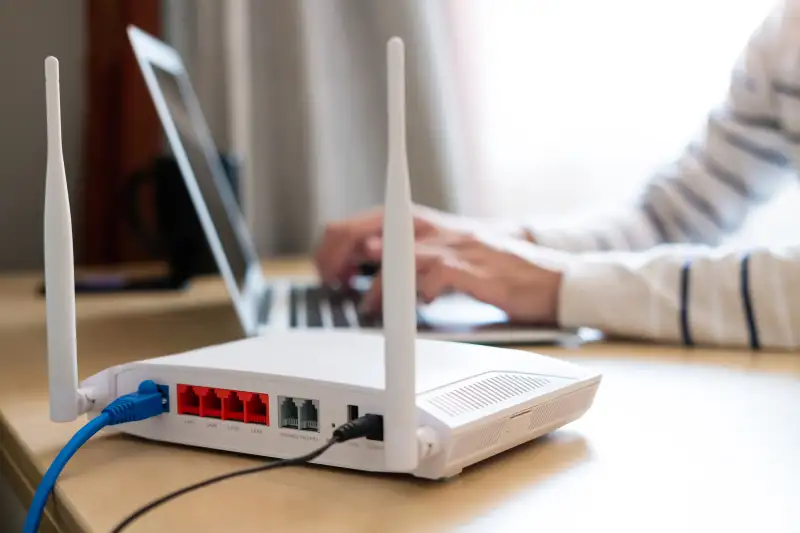The Government Is Giving Millions of Americans $50 a Month to Pay for Broadband Internet

Having trouble paying your internet bills during the pandemic? Let the government chip in.
The Federal Communications Commission announced last week that about 5 million U.S. households have officially enrolled in the Emergency Broadband Benefit Program, an initiative that provides up to $50 a month to help cover the cost of internet and digital devices for certain Americans. Launched in May, the limited-time-only program is intended to give low-income households a discount on broadband bills as the COVID-19 crisis wears on.
So far, it's proving popular: As of Aug. 29, over 4.9 million non-tribal and 107,000 tribal households were enrolled in the FCC internet discount program. (The distinction matters because tribal households can receive discounts as high as $75, whereas non-tribal households max out at $50.)
States with the most residents taking advantage include California, where roughly 626,000 households have enrolled; Florida (about 335,000); New York (308,000); and Ohio (298,000). In Puerto Rico, some 209,000 households are benefiting from the EBB.
In total, about $378 million in support has been claimed so far. But there's still $2.8 billion in appropriations left over. In a news release, FCC Acting Chairwoman Jessica Rosenworcel teased plans to "target and engage eligible families who may qualify for EBB but haven’t yet enrolled."
If you're among them, check if you're eligible and consider applying. Depending on how high your internet costs are, the program could cover most of your bill — or even the whole thing.
Who qualifies for the Emergency Broadband Benefit program?
There are several ways to qualify for the emergency broadband program.
The first involves income limits. Your household — aka you and your spouse, you and your kid(s), or you and your live-in relatives/friends who financially support you — qualifies if its income is 135% or less than the federal poverty guidelines. For a four-person household in the contiguous U.S., that shakes out to $35,775 annually. (Alaska and Hawaii have slightly different thresholds.)
The second concerns low-income relief programs you may already be enrolled in. You're eligible if you, your dependent or somebody in your household is on Supplemental Nutrition Assistance Program (also called SNAP and food stamps), Medicaid, Supplemental Security Income (SSI), Federal Public Housing Assistance (FPHA) or certain tribal programs. Ditto if you or a student in your household got a federal Pell Grant this year or receives free or reduced lunch.
Veterans Pension and Survivors Benefit participants qualify, as well.
The third category has to do with people who experienced "a substantial loss of income since February 29, 2020" because they lost their job or found themselves furloughed. You'll also have to prove that your total household income in 2020 was at or below $99,000 if you're a single filer and $198,000 if you're a joint filer.
You may also be eligible if you're already enrolled in the Lifeline Assistance program, colloquially known as "Obamaphone," or if your internet provider has a COVID-19 relief or low-income initiative in place. New, previous and current customers can apply for EBB money.
According to one estimate, Americans pay an average of $84.37 monthly for internet and equipment rental, so a $50 discount represents a significant savings. In addition to the monthly benefit, you can also score a one-time discount of up to $100 to help pay for a computer or tablet.
How to apply for internet bill assistance
If you're part of the Lifeline program or a different relief program, you can just talk to your internet provider about it.
If you're not, it's still simple: Visit getemergencybroadband.org to fill out an online application. You can also print out a paper application and snail-mail it to Emergency Broadband Support Center, P.O. Box 7081, London, KY 40742.
Still struggling? Contact your broadband provider (or find a nearby company that's participating in the EBB with this tool) and ask about your options.
You'll need to supply some basic information, including your full name, phone number, email address, birth date, address and household size. Then you'll verify your identity via Social Security Number, driver's license, passport, military ID or other government ID.
Finally, you'll have to provide documentation that proves your household participates in one of the eligible programs or qualifies another way. Call 833-511-0311 or email EBBHelp@usac.org if you hit any snags.
Is there a deadline to request the FCC internet discount?
Good question.
The Emergency Broadband Benefit Program is set to end "when the fund runs out of money, or six months after the Department of Health and Human Services declares an end to the COVID-19 health emergency, whichever is sooner," according to its website. Because of the temporary nature of the discount, you should apply sooner rather than later.
That said, there is a proposal tucked into the infrastructure bill in the House that, if passed, may provide future assistance. According to S&P Global, the $14.2 billion Affordable Connectivity Fund would give $30 a month to a wider swath of low-income households on a more permanent basis.
More from Money:
When Is the Next Child Tax Credit Payment? Here's the Schedule for the Rest of 2021
Most Student Loan Borrowers Won't Have to Make Payments Until February
